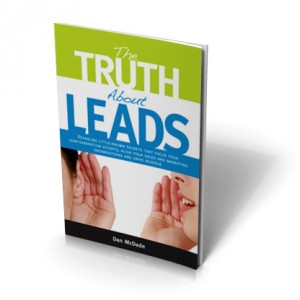There’s a scene in the movie Moneyball that wonderfully captures one of the most important hidden influences that affects our judgment and decision-making. The Oakland As manager, Billy Beane, is presiding at a meeting in which his scouts are discussing prospects they like. The discussion is heavy on references to looks, such as “he has a strong jaw”—as if that has any correlation at all to the real question: can he produce runs? Another does not like a prospect because he has an ugly girlfriend; it tells him the player lacks confidence.
This bias is called the halo effect, and it has a powerful influence on the success of your persuasive efforts. The halo effect means that we have a tendency to let a judgment of a particular trait affect our judgment of other unrelated traits. For example, attractive individuals also tend to be perceived by others as more competent or likeable.
Because of the halo effect, we may perceive individuals differently depending on the situation, or may perceive the situation differently depending on the individual. For example, here are descriptions of two executives:
If you believe the customer is always right, then sales can be pretty easy. Simply ask them what they want and match your offering to that as closely as possible. It’s easy because the customer does all the work.
But just imagine if parents worked that way. “Hey Dad, Spike and the boys want me to hang out with them Saturday night. Can I have the keys to the liquor cabinet and borrow your Harley?”
Or doctors: “Hey Doc, I’ve had this pain in my chest for the past couple of days, and I feel short of breath. It must be my work stress, so could you prescribe me a few anxiety pills?”
Any doctor that would not probe further and try to get to the root cause of the pain, or did not overrule her patient, would be guilty of malpractice, yet that’s the approach that so many salespeople are taught.
 As an avid reader of military history, I’m very aware of the saying that: “Amateurs study strategy; professionals study logistics.” What this means is that it’s very easy to get caught up in the fun and interesting stuff, but if you want to really get things done, you have to master the detail and the boring day to day stuff such as processes, measurements and structures.
As an avid reader of military history, I’m very aware of the saying that: “Amateurs study strategy; professionals study logistics.” What this means is that it’s very easy to get caught up in the fun and interesting stuff, but if you want to really get things done, you have to master the detail and the boring day to day stuff such as processes, measurements and structures.
It’s the same with sales. Amateurs concentrate on the interesting stuff such as motivation, mental attitude and messaging. These are all important, but the reason we never run out of things to say about them is that the basic, boring stuff is being ignored.
Dan McDade is a professional. His book, The Truth About Leads, focuses on the stuff that only professionals care about, so it probably won’t become a runaway success in the sales world—and that would be a shame.
Sales and marketing are always pointing fingers at each other. Marketing complains that salespeople don’t follow up properly on the leads they give them; Sales responds that the leads are worthless. Both sides are right and both are wrong. The solution is for a separate group to provide fully nurtured leads, track their progress closely, and make salespeople accountable for following up.
Everyone focuses on lead generation, but they should work instead on lead nurturing. If you don’t care about quality, it’s easy to generate leads. But if you don’t care about quality (and programs that measure marketing’s contribution only by cost per lead send the implicit message that only quantity counts), those leads aren’t going anywhere when they hit the salesperson’s desk.
Salespeople are under tremendous pressure to produce short term results, so they’re not going to spend much time on activities that don’t have a high chance of paying off this quarter. According to McDade’s figures, 70% or more of leads are not being followed up by the sales force.
But if marketing focuses on only providing short-term leads, only about a third of those are “hot”, because often the buyer has already made a decision and just needs additional quotes as column fodder, or because by then it is too late to influence the decision process.
According to the book, 45% of qualified leads will buy within a year, but only 10% will close within three months. Time-pressured salespeople will not do what needs to be done to nurture the other 35%.
What does “fully nurtured” mean? Each lead had already been contacted at least eight times through various touchpoints and has graduated from unknown to near-term decision status. In addition, the salesperson received a complete contact history, overview of the decision process, timeline, budget and pain points. That type of qualified lead can’t be produced by low-budget telemarketers who are measured only by quantity or cost per lead.
His recommended solution is a group that is separate from marketing and sales that will specifically focus on identifying, nurturing and tracking qualified leads. That group can be internal, or you can outsource it to his own company, PointClear. (I have absolutely no problem with an author using his book to sell me on his company. In the best traditions of challenger selling, he is educating people about a real and significant problem that they only vaguely know they have, and most companies don’t have the ability, resources or the time to build their own internal lead nurturing capabilities. Besides, McDade is not “in your face” about it.)
While the first half of the book details the problem, the second half tells us what to do about it, and this is the part I really enjoyed. I took away some lessons and ideas for my own marketing efforts. He tells us to pay close attention to an integrated effort he calls M?O, or market, media and offer.
The market is one area that is definitely ripe for clear definition, segmenting and targeting. Quality leads are more apt to come from a smaller market that is tightly defined than one that is overly vague and broad. Again, quality counts.
Regarding media, the best approach is multi-media, multi-touch and multi-cycle. Most database marketers give up too soon and don’t avail themselves of multiple touch points. One surprising statistic he tells us is that senior level decision makers are 2.5 times more likely to return voice mails than are their subordinates. And, if you’re worried about leaving too many messages, think about how often it takes multiple phone calls just to set up lunch with a friend.
If you do leave a voice mail, your offer should talk as little as possible about your own product or solution and as much as possible about the prospect’s business goals and challenges. And, any marketing message should tell in clear English so that the recipient knows exactly what you sell and how you can help them.
There is one quibble I have with the book: a lot of his argument rests on the validity of the eye-opening statistics he provides, (such as the one about the likelihood of senior executives responding to voice mails) but he does not reference his sources. When an author tells me that “experts say” and does not identify those experts, I get a little nervous. I’m not questioning his figures, but I look at references as Reagan did the Soviets: “Trust, but verify.”
Despite that minor complaint, I recommend this book to anyone who is in a sales position of enough authority to influence the decisions that are made with regard to lead-generation efforts, or to sole practitioners like myself who can benefit from some of his very useful prospecting suggestions.
The three most important persuasion tools any speaker or salesperson can use are stories, questions and visuals. Imagine the power if you could put those three together?
Last September I wrote an article about how to use questions to get the buyer to tell you their story. It works great during a sales call because it guides the listener to tell you a compelling story that makes your solution their idea. In effect, it gets your listeners to tell you what you want them to hear.
In this article, we’ll take it to another level by adding the third tool—visuals.
You can put all three tools together into an irresistible combination by using a whiteboard or flipchart to create the visuals in real time during your presentation. If you do it right, you can get the customer to show you what you want them to see.





